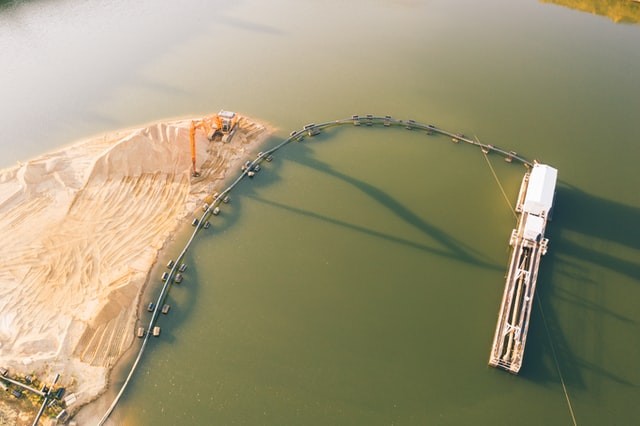The National Institute of Advanced Industrial Science and Technology (AIST) in Japan, Curtin University in Australia, and the University of Hawaii conducted the study, which was supported by The Pew Charitable Trusts.
It found that noise from a single mine could travel up to 500 kilometers (311 miles) in calm weather, with cumulative effects likely in areas where there are several mines operating.
Deep-sea mining's potential effects on the deep ocean's ecosystems and habitats are a source of widespread concern.
Alongside this, it is being questioned whether deep-sea mining is required, desirable, and/or economically feasible.
Deep-sea mining
 (Photo : Marcin Jozwiak/Unsplash)
(Photo : Marcin Jozwiak/Unsplash)

Many of the unique organisms that live in the deep sea, where there is no sunlight, probably are using sound to navigate, communicate, find mates, find food, and detect predators and other threats, as per ScienceDaily.
The Clarion-Clipperton Zone (CCZ), which spans 4.5 million square kilometers between Hawaii and Mexico - and is a major focus of deep-sea mining interest - is being investigated for mining potential by seventeen contractors.
An estimated 5.5 million square kilometers - an area larger than the European Union - would experience increased noise levels if each of the contractors launched just one mine.
This level of mining activity may not only negatively affect species that are susceptible to noise, but it may also jeopardize efforts to protect preservation reference areas, or areas that have not been affected by mining, for use in scientific comparisons.
Although deep-sea mining system prototypes at smaller scales are already being tested by mining companies, they have not yet disclosed their findings regarding underwater noise pollution.
As a result, the Science article will have to substitute noise levels from more thoroughly researched industrial activities, like ships for the oil and gas industry and coastal dredges.
Once the evidence is accessible, the actual noise levels from deep-sea mining may differ.
But according to Andrew Friedman, project director of Pew's seabed mining project, they are more likely to be higher than the proxy data than lower because the real equipment used for seabed mining is much larger and more potent than the proxies.
These projections are probably conservative.
The Science study adds to a growing body of research indicating it is unlikely that sufficient data will be gathered to evaluate the environmental risk from mining noise before the deadline in July 2023.
In light of this, an increasing number of nations, professionals, businesses, and environmental groups are urging a halt to all seabed mining until such time as science and management could be implemented to ensure that mining will not negatively impact the marine environment.
According to Friedman, the study showed how little is known about the potential effects of mining on the entire water column, not just the deep ocean.
Also Read: Gold Mining Critically Impairs Water Quality in Rivers Across Peruvian Biodiversity Hotspot
The implication of Deep-sea mining
The effects on deep-sea ecosystems are unknown because deep-sea mining is still in the experimental phase.
However, based on the information at hand, scientists have issued a warning: biodiversity loss is unavoidable and, more than likely, irreversible, as per Deep Sea Conservation Coalition.
Deep-sea mining is costly, and while it may be financially beneficial for specific businesses, its broader economic benefits have come under scrutiny.
According to the UN Law of the Sea, mining permits must be granted by the International Seabed Authority (ISA) for the betterment of humans as a whole in the international oceanic areas.
Sucking up nodules on the abyssal plains would involve destroying the seabed, potentially resulting in species extinction.
The habitats of hydrothermal vents would be destroyed by mining, and the organisms that live there would perish even before the biodiversity of these unique and fragile ecosystems has been fully understood.
There will probably be wider impacts on the marine environment in addition to the direct and immediate effects on the deep-sea ecological systems that are mined.
Recirculating mine tailings and sediment-containing wastewater into the ocean also would result in toxic plumes that could travel hundreds of kilometers or more, affecting species that depend on bioluminescence for mating and hunting.
Related Article: How Coal and Metal Mining Affects Salmon and Trout in Northwestern North America
© 2024 NatureWorldNews.com All rights reserved. Do not reproduce without permission.


![Climate Change is Reducing Dust Levels Worldwide as Arctic Temperature Warms [Study]](https://1471793142.rsc.cdn77.org/data/thumbs/full/70320/280/157/50/40/climate-change-is-reducing-dust-levels-worldwide-as-arctic-temperature-warms-study.jpg)


